Thirty years ago, Time magazine asked if L.A. was ‘going to hell.’ Are we there yet?
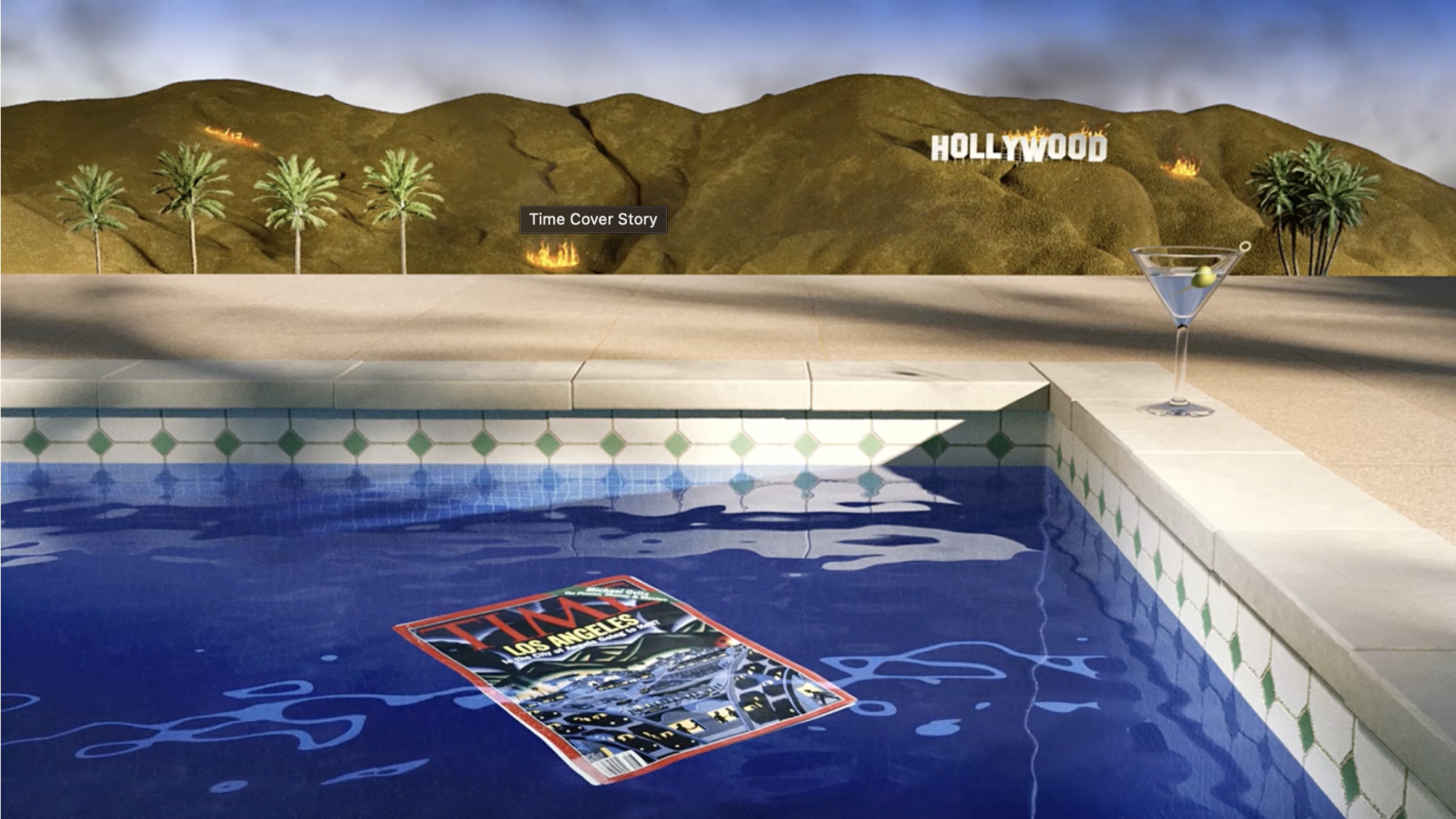
| BY DANIEL MILLER STAFF WRITER FOLLOW The freeways are clogged with cars. Criminals point guns at the unsuspecting. A fire burns near shadowed foothills. The April 19, 1993, cover of Time magazine depicts a dark vision of Los Angeles. And the question it asks is even more ominous: “Is the City of Angels Going to Hell?” The accompanying story, titled “Unhealed Wounds,” is a portrait of a divided city in the wake of the 1992 riots sparked by the acquittal of the Los Angeles Police Department officers who had beaten Rodney King. The piece paints a bleak picture: the collapse of the local aerospace industry had wiped out tens of thousands of jobs, an initial effort to rebuild after the violence of the prior year had sputtered, and there was a tense race underway to replace longtime Mayor Tom Bradley. |
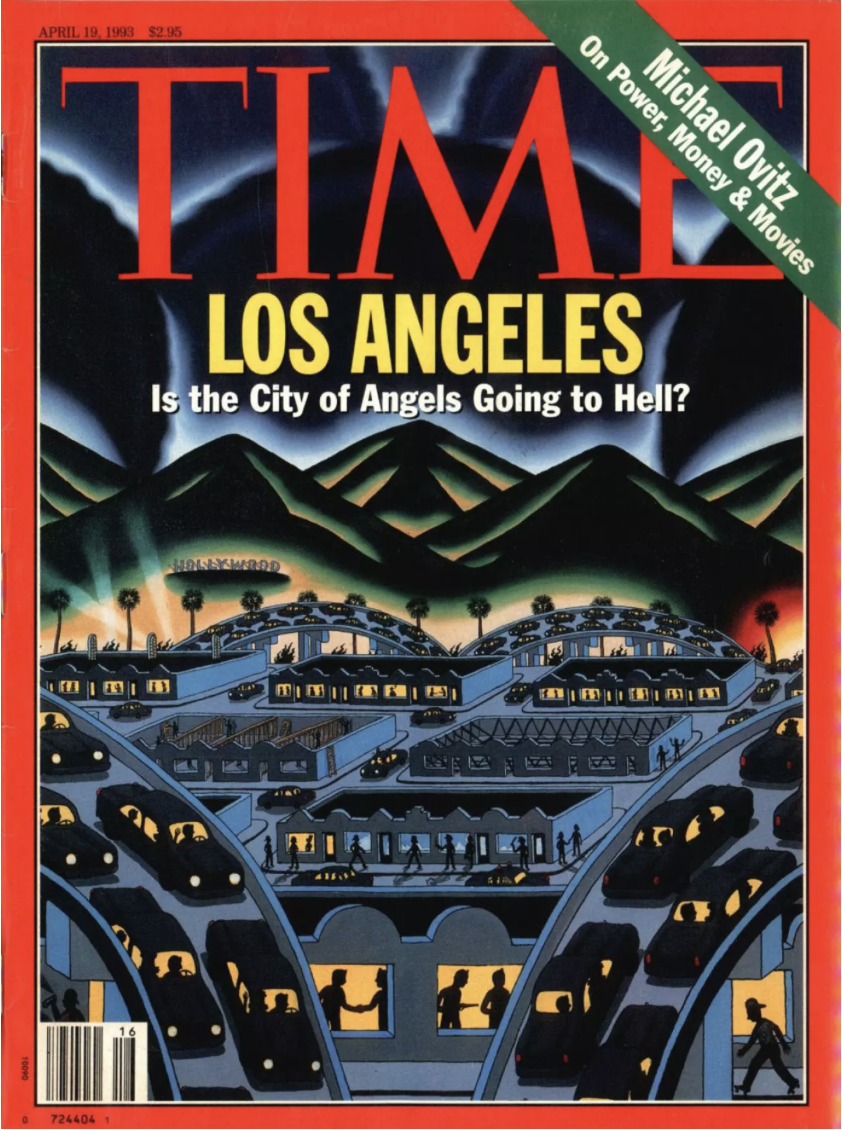
(Time Inc.) |
“Much of what seemed modern and alluring about Los Angeles now seems terribly shortsighted and ugly,” the story said. “The ethnic patchwork appears to be a map of bunkered enclaves. Its center cannot hold because the city doesn’t have one.” The story points to a few bright spots, such as the work of Homeboy Tortillas, a program of Homeboy Industries, which works to rehabilitate ex-gang members. But the magazine mostly looked ahead with angst: the second trial over the King beating had yet to conclude, and its outcome, the story said, would “determine just how much anger is pent up in the city’s poor districts.” (A companion piece focused on the then-ongoing follow-up trial for the officers who brutalized King. Guilty verdicts were later handed down in the federal case.) A lot has changed in 30 years. There are new rail lines, museums and stadiums, and renewal in downtown’s Historic Core and Arts District. Those identifying as Latino or Hispanic now make up nearly half of L.A.’s population. A space shuttle paraded through the streets, the Lakers racked up six championships and the Dodgers won a World Series. Yet there’s still a sense that L.A. is teetering on the edge. Soaring income inequality and a housing crisis have widened the gulfs between classes. Climate change has brought on searing heat and megastorms that disrupt daily life and claim lives. Smash-and-grab and follow-home robberies have contributed to a feeling of lawlessness. Outrage over police brutality prompted the widespread social justice protests of 2020. And the homeless epidemic continues to spiral: the 2023 Greater Los Angeles Homeless Count estimated that more than 75,000 people experience homelessness in the county on any given night. The question posed by Time was a provocative one. Is this hell? To find out, we asked 17 prominent Angelenos to weigh in. There was consensus that this is a fraught time for Los Angeles — nearly every participant mentioned the scourge of homelessness when contemplating the issues affecting the city. That’s in stark contrast to the 1993 Time story: homelessness wasn’t mentioned. Even once. |
The Rev. Andy J. Bales
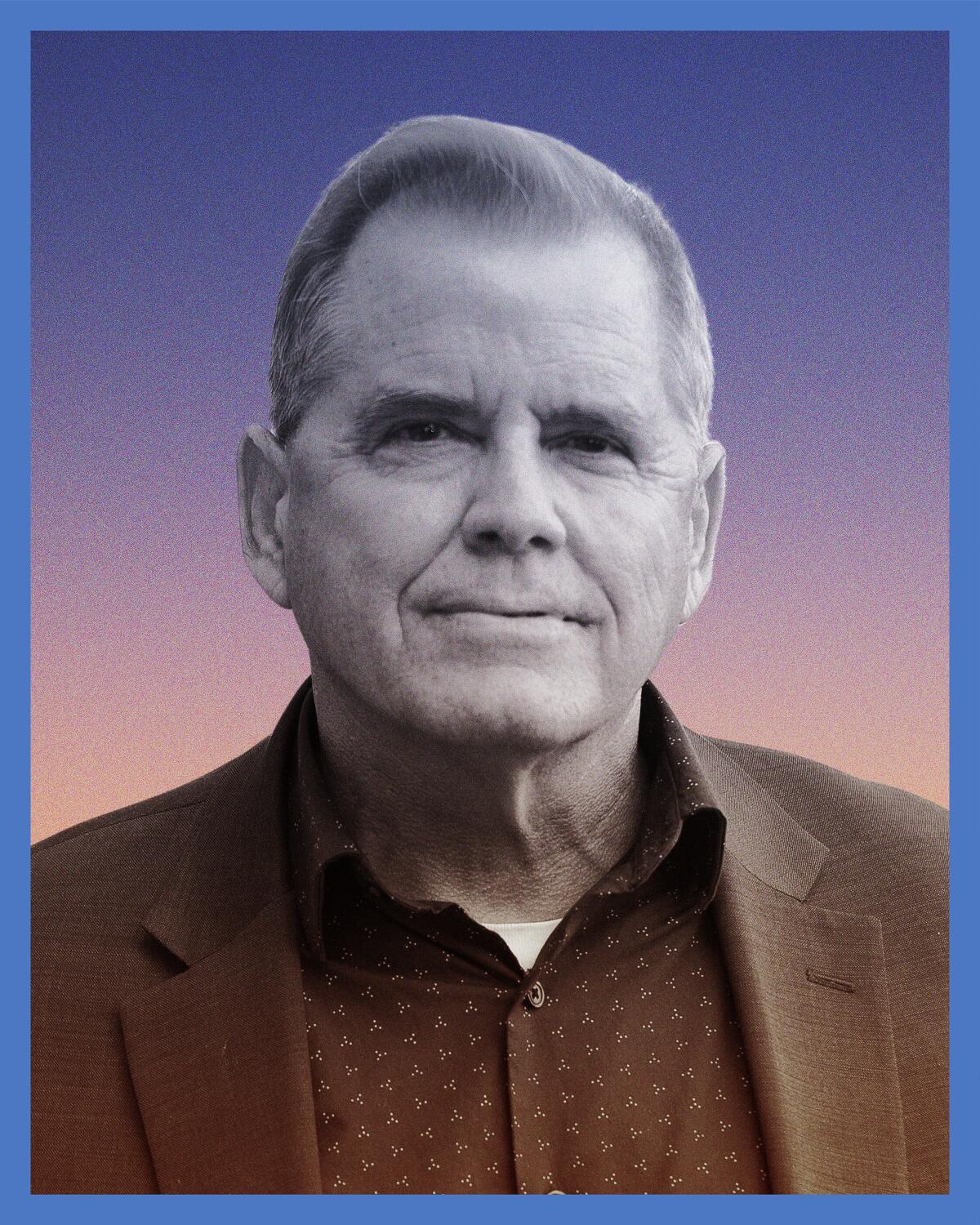
(Photo illustration by Los Angeles Times; photograph from Union Rescue Mission)
Chief executive of Union Rescue Mission, a Skid Row-based, privately-funded provider of homeless services
|
Homelessness is absolutely the biggest issue Los Angeles faces. Homelessness was increasing, unaddressed, right in front of our eyes in the 1990s and no infrastructure was being set up. We were too late to the game to address it in the way that was needed. We never kept up — and then we were surrounded by a tsunami of people suffering on the streets. They are certainly living in a hell on earth. Homelessness is hell. — Rev. Andy J. Bales, chief executive of Union Rescue Mission
For the six people who die per day in L.A. County from complications of homelessness, it has been hell. For the family members who have lost their loved ones to the streets, it’s been hell. Homelessness is hell. There is no suffering like hoping the sun comes up so that you don’t shiver anymore, or hoping that you can find a restroom before you get a urinary tract infection. We have really let people down, and we can do so much better. We certainly won’t solve it the way we are going, with very expensive units for a few, and tens of thousands still on the streets. We need immediate shelters for everybody on the streets and innovative affordable housing. The city is not stepping up to do enough. There is still a chance to turn things around. But we are not going to get there the way we are going about it. |
Brenda Stevenson
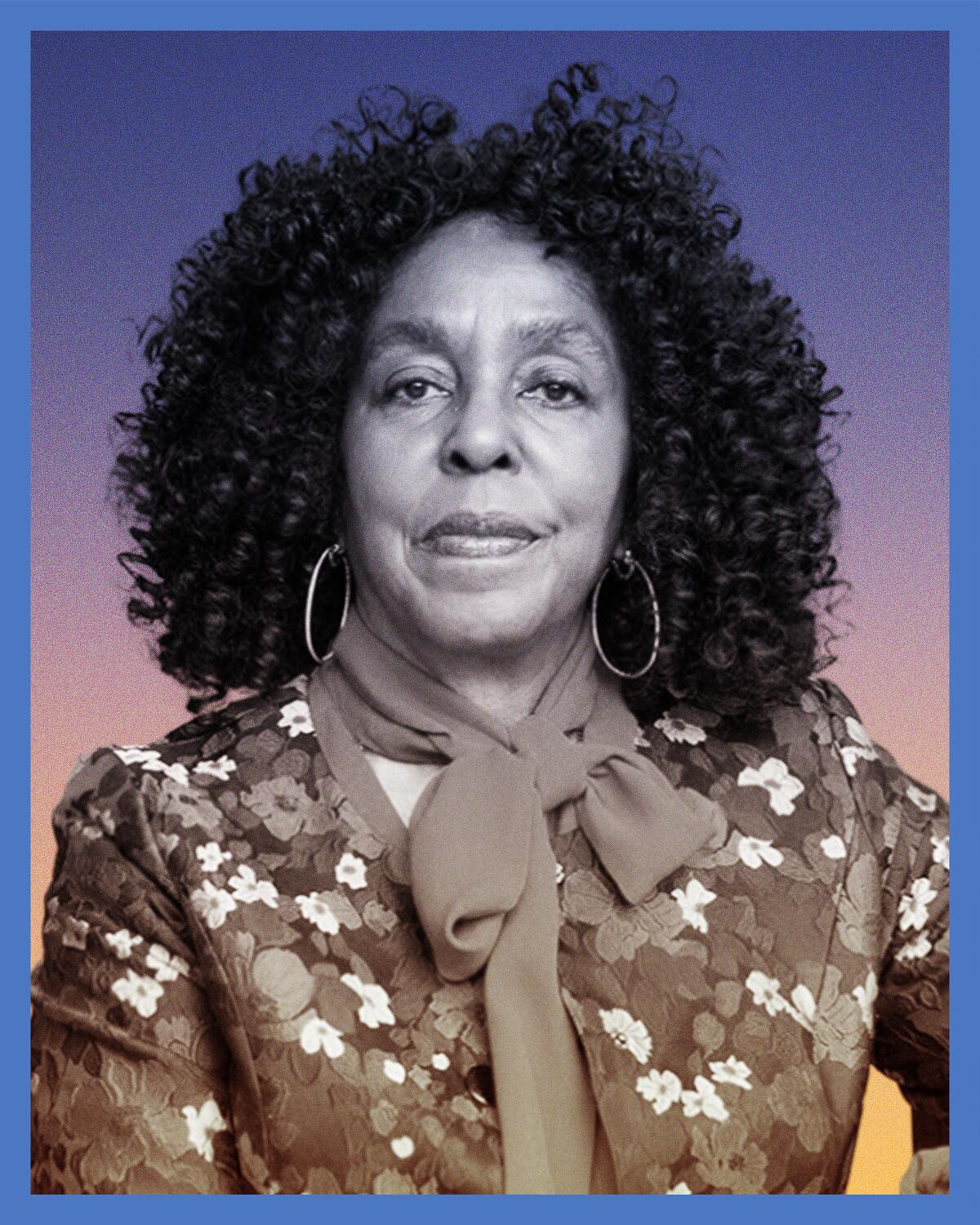
|
In 2020, when we saw the protests around the killing of Breonna Taylor and others, one of the things that was more positive was that people of many backgrounds participated. It wasn’t just Black Lives Matter; it was people of all ethnicities, races and classes. The people who were protesting were more peaceful, as compared to the uprising of 1992. Still, I think most people of color remain wary of the police. This is not just an L.A. problem — this is a national problem. When we look at the Black population in Los Angeles 30 years later, we still see a very large and disproportionate number of people incarcerated. The largest proportion of unhoused people are Black. You also see the policing problems, with more Black people — and people of color in general — being stopped and frisked by the police. I am always hopeful for improvement in L.A. — and I do think it is in a better place than it was in 1993. There are still things we are struggling with: homelessness is the most devastating social problem we have in Los Angeles. But I train students at UCLA — the best and the brightest in Los Angeles — and that’s a hopeful place. |
B-Real
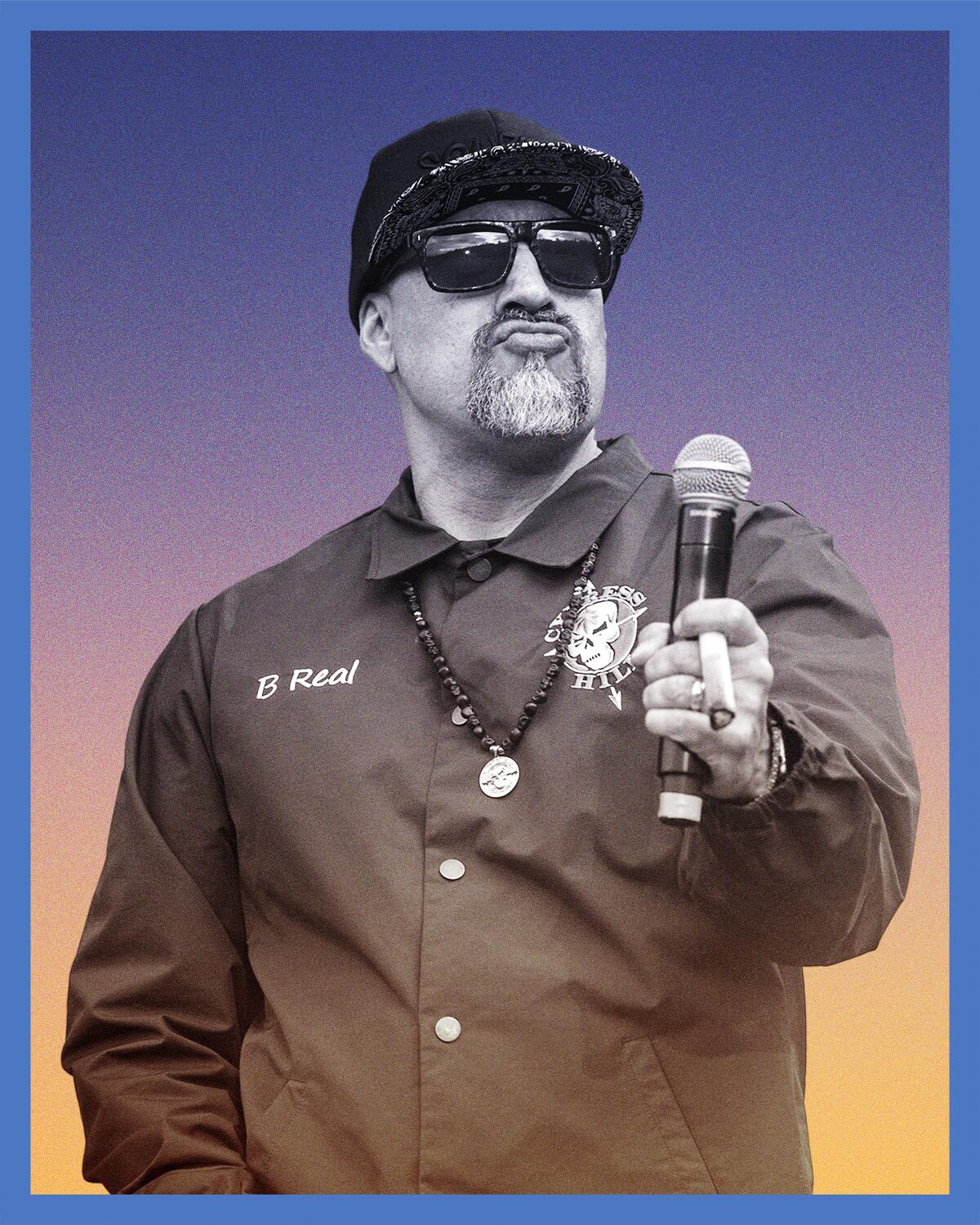
(Photo illustration by Los Angeles Times; photograph by Kristy Sparow / Getty Images)
Rapper, founding member of hip-hop group Cypress Hill
|
I remember coming back from a Cypress Hill show in Humboldt County when the riots had just started — I was living in Venice at the time — and we were seeing smoke clouds everywhere. it was almost apocalyptic. They lost control of the city, from the authorities to the people who lived within it. Growing up in L.A., you know about the problems. Like being profiled by the Los Angeles Police Department because of how you look and where you’re from. You didn’t have to be a gangbanger to get that kind of treatment. With hip-hop, a lot of us were talking about things we experienced growing up in L.A. Music became a platform to speak about what we went through. We became voices for people in those communities. It also gave those outside the community an understanding of what it was really like. We found allies who understood what we were going through instead of judging us. Songs throughout our catalog — “How I Could Just Kill a Man,” “Throw Your Set in the Air” and “Illusions” — included significant messages that related to the communities we came from and how we were treated. Because of music I found a way out of gang activities. Hip-hop was taking youth and giving them an opportunity to be something other than a drug dealer or gangster. Essentially, it saved our lives. Los Angeles is beautiful — and it’s dangerous. Today, it feels more dangerous than it was back then. Gangs and drug dealers have gotten smarter. Technology has helped them do what they do in stealth. And we still have social injustice, police brutality and a lack of opportunities for people. If you’re keeping it real, you are going to talk about the ugly things. Because that’s life. But we can make it better. For things to change, people will need to wake up and not be in denial about what happens here. |
Mary Sue Milliken

(Photo illustration by Los Angeles Times; photograph by Anne Fishbein)
Chef and co-founder of Mundo Hospitality Group, whose restaurants include Border Grill and Socalo
|
L.A.’s biggest issue is homelessness — it undoubtedly causes the most daily angst. But I am proud to be an Angeleno — and there is still something very positive about our city. In my industry, restaurants are more diverse and exciting than at any point since I moved here 43 years ago. We continue to find ways to delight guests with a variety of cuisines at a variety of price points. And change is coming — the food-service industry needs to come together and help consumers understand they are eating food that is artificially priced and often made by immigrants, single moms and people of color who work two jobs to survive. It isn’t fair and it isn’t sustainable. I’m glad restaurant workers are demanding more — and living wages for low-wage workers are improving. When communities decide everybody must be paid a living wage, it makes it easier, because then the prices all go up and consumers understand: OK, now it costs more. In 2020, eight women restaurant operators/chefs and I started a nonprofit called Regarding Her — and over 60% of our 750 members are women entrepreneurs of color. I am proud of the ways we’ve been able to bring our historically siloed community together in three short years. I am always going to find the silver linings. I love L.A. — I don’t think it’s gone to hell. |
Bernard Parks

(Photo illustration by Los Angeles Times)
Former chief of the Los Angeles Police Department and a Los Angeles City Councilman from 2003 to 2015
| In terms of local politics, local government and the City Council, we may not be in hell but we are close enough to it to where you can feel the heat and smell the smoke. There are many things that are broken. The corruption is overwhelming in society. You have multiple investigations and indictments of elected officials at every level. Many law enforcement officials are being investigated, disciplined for serious misconduct or imprisoned. L.A.’s Ethics Commission, which was established to monitor and investigate the actions of public officials, is dysfunctional, as it is too dependent on elected officials for funding and operational policies.
Our redistricting processes have been manipulated by the city council for self-serving reasons and fail to fairly represent constituents. Recently, three City Council members and a union head showed that they had not learned from prior redistricting mistakes. They too, tried to cut the boundary lines to their liking, while expressing an extreme dislike and thoughtlessness for the ethnic diversity that makes this city great. And, it was all caught on tape. Now, the state’s attorney general is investigating Los Angeles’ redistricting process. We used to think that corrupt redistricting was only done in the South — places where they had to have the Department of Justice keep an eye on things. You compound the troubles in politics with the corruption at our universities, nonprofits, corporate offices, banking institutions and government work forces, and it’s very clear we are not going in the right direction. And there is little that gives you the sense that there are a large number of people in positions of authority looking to go in a different direction. |
John Carpenter
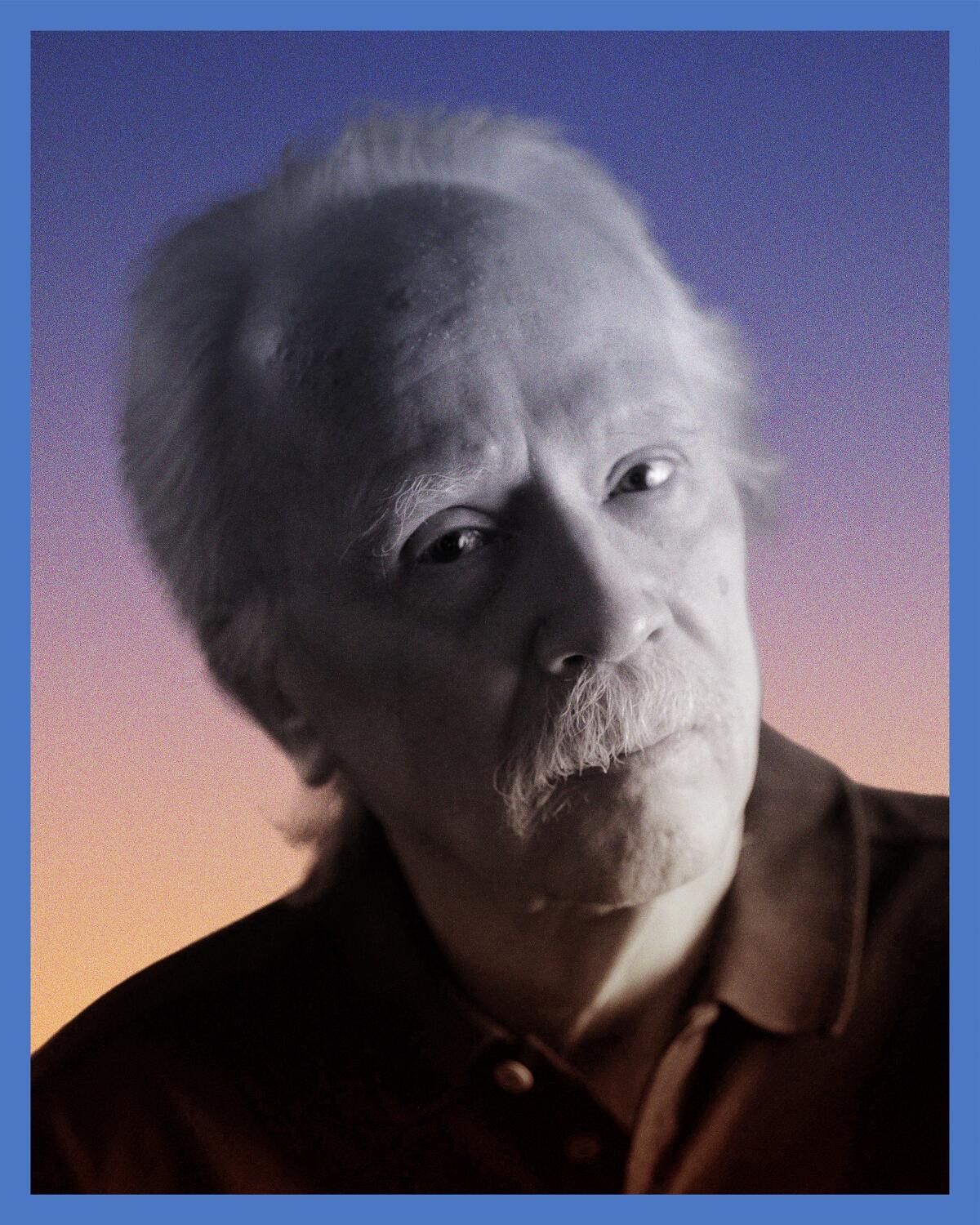
(Photo illustration by Los Angeles Times; photograph by Kyle Cassidy)
Film director, writer and composer behind the “Halloween” franchise and many other movies, including 1996’s “Escape From L.A.”
| I fell in love with L.A. when I came here in 1968. I would go to the movies downtown. Oh God, I loved the old theaters down there. I’ve been in love with the city ever since.
“Escape From L.A.” was a movie made with enormous love for the city. We were this nihilistic, dark look at L.A., and the lead character shut the power off on everything with an electromagnetic pulse. A nuclear weapon detonated 25 miles above L.A. would do that — a nuclear physicist told me that. The movie was set in 2013: that’s the problem with doing a near-future dystopian film. It’s going to catch up with you. These days, homelessness really concerns me a great deal. The housing is way too expensive. We have mountainsides that are crumbling. We have water problems — the droughts. There’s corruption in the government. There are always going to be traffic issues here. I’m having a hard time believing they’ve got the 10 Freeway repaired so quickly. I’m waiting. And the earthquakes — we live on the edge. It makes us feel special about ourselves. It’s ridiculous because at any moment we could topple over — topple over into doom. That’s L.A. for you — there’s nothing like it. We do have problems, but they don’t rise to the level of hell. The weather is nice — this is our winter. If you read the papers, they say a lot of the population is leaving California. Well, I say, “Bye! Take off.” We need more room here. It’s always been crowded. |
Connie Chung Joe
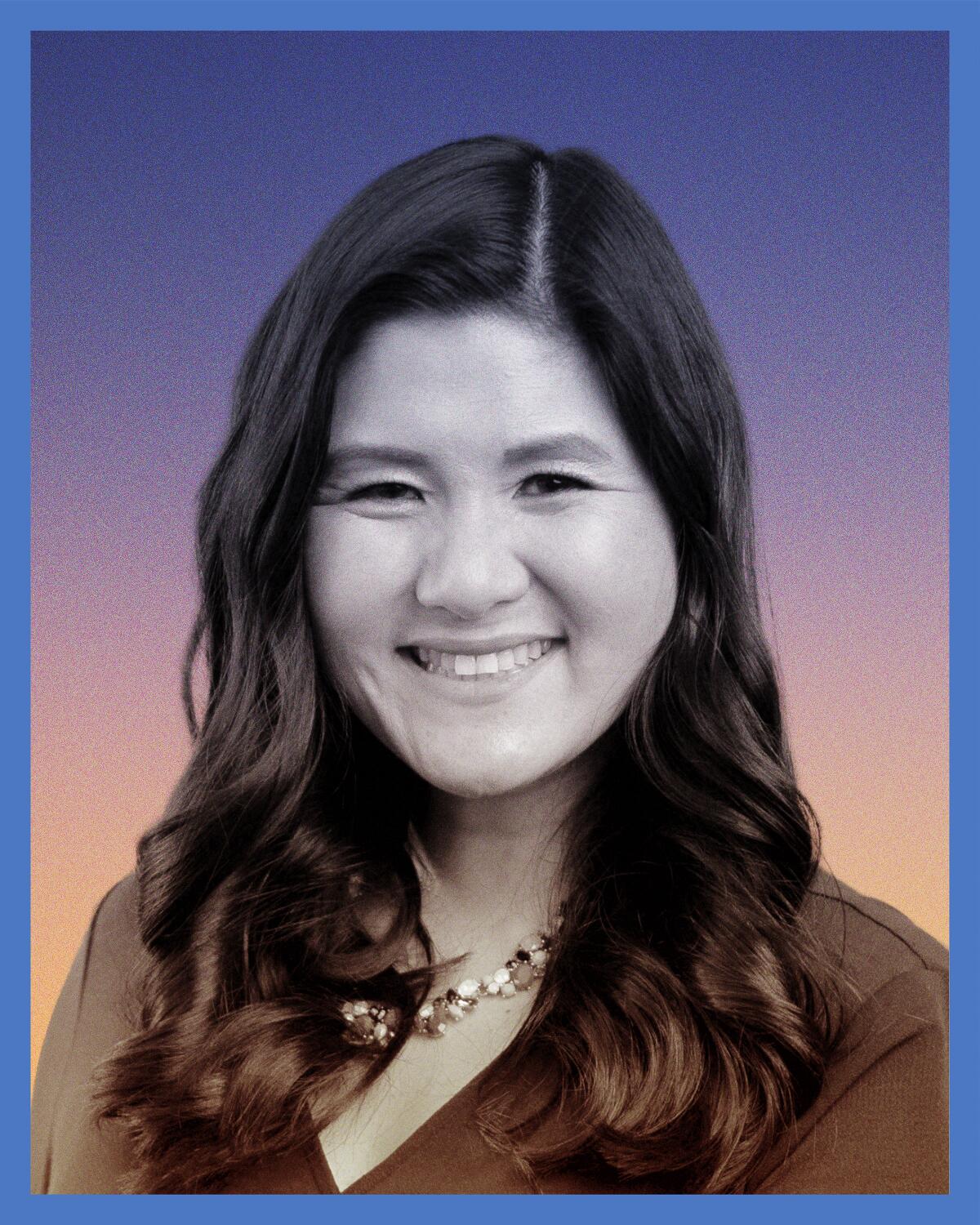
(Photo illustration by Los Angeles Times; photograph from Asian Americans Advancing Justice)
Chief Executive of Asian Americans Advancing Justice Southern California, a legal and civil rights organization
|
As a Korean and Asian American who grew up in L.A. and lived through the 1992 uprising (known as Saigu in Korean), there’s no doubt there were deep racial tensions. And racial tensions continue to be a problem in L.A. today, as we saw all too well when the City Council audio leaks came out last year. That being said, I think L.A. is still one of the most amazing places to live as a person of color. This is a majority minority town. Latinos make up about 50% of the population and Asian Pacific Islanders are the fastest growing racial group. L.A. embraces historically marginalized communities, whether you’re a person of color, an immigrant or LGBTQ+. Things have vastly improved since 30 years ago, when Korean Americans were still a fairly new immigrant community, struggling with language and cultural barriers. Today, a whole generation of us were raised in the U.S. and have successfully navigated systems. We’ve had City Council members like David Ryu and now John Lee who’ve entered positions of power and leadership and speak up for our community. And we’re not just accepted for being Korean, our culture is now celebrated. L.A. loves its Korean BBQ and fried chicken. Roy Choi’s Kogi Truck sparked a food truck revolution across the US. Koreatown is a 24/7 mecca for food and nightlife. This is a far cry from how Korean culture was viewed in the early 90s, when I wouldn’t be caught dead eating kimchi in front of non-Koreans. It’s not perfect living in L.A. I still feel like Korean and other Asian Americans get overlooked — we’re not as civically engaged, nor are there enough of us in positions of political power. And I hate all the multimillion-dollar homes when we have tens of thousands of unhoused Los Angelenos. But when I think I’ve had enough — of the traffic, skyrocketing living costs and other issues — I’m drawn back by our diversity, progressive values, and being surrounded by so many Korean and Asian Americans. It’s far from hell; this is home. |